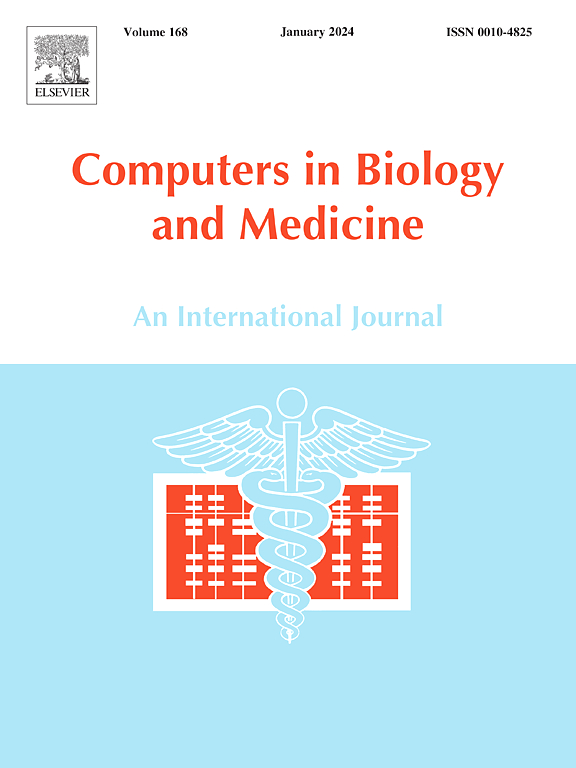Computational prediction of Gore Excluder conformable endoprosthesis in the infrarenal aortic neck: results of the ACSSim study
IF 7
2区 医学
Q1 BIOLOGY
引用次数: 0
Abstract
Background and objective
The Gore® Excluder® Conformable (EXCC) device offers a less invasive and less risky alternative to open surgery and complex endovascular repair of abdominal aortic aneurysms for patients with hostile aortic neck anatomies. Indeed, its specific structure has sufficient conformability to prevent proximal sealing complications. Nevertheless, its mechanical behavior is more complex than the one of standard devices, and in complex anatomies, its deployment in the proximal neck of the aortic aneurysm remains difficult to predict. The aim of the present study was to develop and validate a digital twin of EXCC deployment that could accurately predict proximal endoprosthesis sealing.
Methods
Twenty patients who underwent endovascular aortic aneurysm repair with the EXCC device for complex anatomies in one aortic center were selected. Endoprosthesis deployment in each aorta was simulated by the finite element (FE) method. We compared the positions predicted by the FE simulations with post-operative computed tomography angiography (CTA), focusing on the proximal axis angle, the stent center positions and stent-rings diameters through a principal component analysis.
Results
A successful FE simulation of endoprosthesis deployment could be performed for each of the twenty patients. Relative diameter and vector mean deviations were 4.65 ± 3.85 % and 3.00 ± 1.41 mm, respectively. Axis angle mean deviation was 10.64 ± 5.09°. Outputs show satisfying agreement between numerical simulations and post-operative CTA. Mean proximal apposition was 81.64 ± 11.35 %. Minimal and maximal endoprosthesis appositions were 54.27 % and 95.11 %, respectively.
Conclusions
The FE model predicted accurately stent-graft positions in 20 patients presenting complex anatomies. High endoprosthesis appositions were observed. This shows the potential of computer simulation to anticipate endoprosthesis proximal sealing complications such as endoleaks and migration before intervention.
肾下主动脉颈部Gore exuder合格假体的计算预测:ACSSim研究的结果
背景与目的Gore®exuder®Conformable (EXCC)装置为腹主动脉瘤患者提供了一种微创、低风险的替代方案,可用于开放性手术和复杂的血管内修复。事实上,其特殊的结构具有足够的顺应性,以防止近端密封并发症。然而,它的力学行为比标准装置更复杂,并且在复杂的解剖结构中,它在主动脉瘤近端颈部的部署仍然难以预测。本研究的目的是开发和验证EXCC部署的数字双胞胎,可以准确预测近端假体密封。方法选择20例采用EXCC装置对单主动脉中心复杂解剖行血管内动脉瘤修复术的患者。采用有限元法模拟假体在各主动脉内的部署。我们将FE模拟预测的位置与术后计算机断层血管造影(CTA)预测的位置进行比较,通过主成分分析,重点关注近端轴角、支架中心位置和支架环直径。结果20例患者均能成功进行假体展开的有限元模拟。相对直径和载体平均偏差分别为4.65±3.85%和3.00±1.41 mm。轴角平均偏差为10.64±5.09°。结果表明,数值模拟与术后CTA吻合较好。平均近端对位率为81.64±11.35%。最小和最大假体置换术分别为54.27%和95.11%。结论FE模型准确预测了20例复杂解剖结构患者的支架位置。观察到假体高度吻合。这显示了计算机模拟在干预前预测假体近端密封并发症(如内漏和移位)的潜力。
本文章由计算机程序翻译,如有差异,请以英文原文为准。
求助全文
约1分钟内获得全文
求助全文
来源期刊

Computers in biology and medicine
工程技术-工程:生物医学
CiteScore
11.70
自引率
10.40%
发文量
1086
审稿时长
74 days
期刊介绍:
Computers in Biology and Medicine is an international forum for sharing groundbreaking advancements in the use of computers in bioscience and medicine. This journal serves as a medium for communicating essential research, instruction, ideas, and information regarding the rapidly evolving field of computer applications in these domains. By encouraging the exchange of knowledge, we aim to facilitate progress and innovation in the utilization of computers in biology and medicine.
 求助内容:
求助内容: 应助结果提醒方式:
应助结果提醒方式:


